Luxor Temple: The Most Iconic Temple in Egypt
Welcome to Luxor, home to some of the most spectacular temples in Egypt. Amongst these magnificent structures stands Luxor Temple, a site filled with history, architectural wonders, and captivating symbolism. As one of the most iconic temples in Egypt, Luxor Temple holds a special place in the hearts of both locals and travelers alike.
In this blog post, we will explore the fascinating history and significance of Luxor Temple, as well as provide tips for visiting this awe-inspiring site. So, join us as we uncover the secrets and beauty of Luxor Temple, a true gem of ancient Egypt.
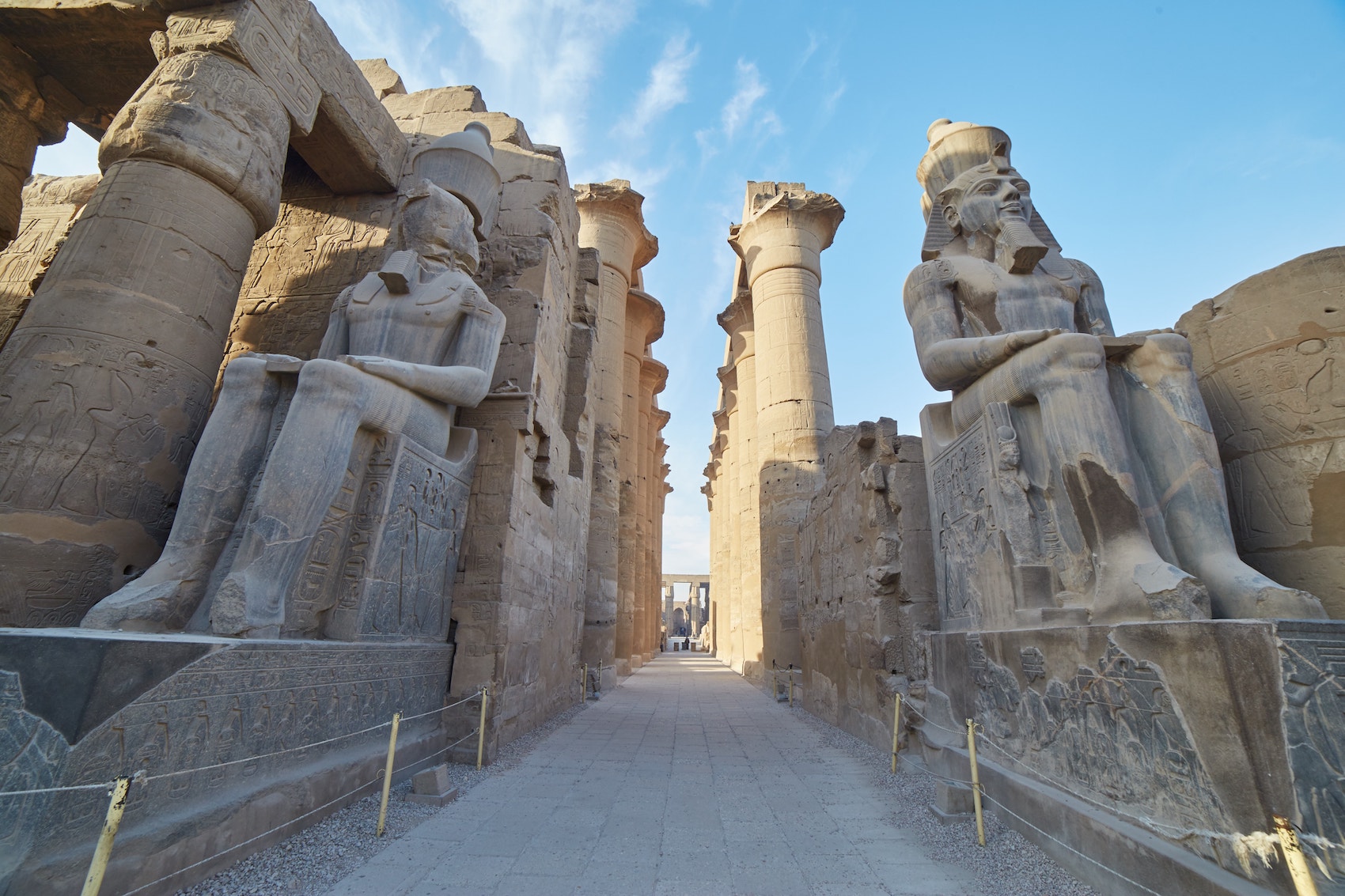
Introduction to Luxor Temple
Overview of Luxor Temple and its historical significance
Situated in the heart of Luxor, Egypt, Luxor Temple stands as one of the country's most iconic and awe-inspiring temples. Constructed around 1400 BCE, during the New Kingdom period, this ancient temple holds great historical significance and serves as a testament to the grandeur of ancient Egyptian architecture.
Luxor Temple was dedicated to rejuvenating kingship and was believed to be the dwelling place of the god Amun-Ra. It was designed to be a place of religious worship, rituals, and celebration, serving as a focal point for the ancient Egyptians' religious and social life.
The temple has witnessed numerous additions and modifications by different pharaohs throughout its history, resulting in a fascinating mix of architectural styles and features. From its grand entrance and colossal statues to its mesmerizing Hypostyle Hall adorned with intricately carved columns, the temple showcases the skill and craftsmanship of ancient Egyptian artisans.
Today, Luxor Temple stands as a testament to the rich legacy of ancient Egypt and is a popular tourist attraction that offers visitors a glimpse into the grandeur and splendour of the past. Its historical significance, architectural beauty, and cultural importance make it a must-visit destination for anyone interested in exploring the ancient wonders of Egypt.

History of Luxor Temple
Insight into the construction and development of Luxor Temple
Luxor Temple, located on the east bank of the Nile River in Egypt, has a rich history dating back to around 1400 BCE. The temple was constructed during the reign of Amenhotep III and completed by Tutankhamun and Horemheb. It was dedicated to the Theban Triad of Amun, Mut, and Khonsu.
Construction of the Luxor Temple began during the New Kingdom period and continued throughout the reigns of various pharaohs. The temple underwent significant expansions and renovations over the centuries, with each ruler adding architectural elements and inscriptions. The site was also used for religious ceremonies and celebrations, including the Opet Festival, which celebrated the divine marriage between Amun and Mut.
The construction of Luxor Temple followed the traditional Egyptian temple design, with an entrance pylon leading to a central courtyard, a hypostyle hall and various sanctuaries. The structure was built using sandstone, quarried locally and transported to the site.
In addition to its architectural significance, Luxor Temple is known for its decorative elements, including intricate carvings and reliefs depicting scenes from ancient Egyptian mythology and rituals. The temple also features several obelisks, statues, and sphinxes that add to its grandeur.
Today, Luxor Temple stands as a testament to the ingenuity and craftsmanship of the ancient Egyptians. It attracts tourists worldwide who come to admire its magnificent architecture and learn about Egypt's rich cultural heritage.
Table: Key Facts about Luxor Temple
| Location | East Bank of the Nile River, Luxor, Egypt |
|---|---|
| Constructed | During the New Kingdom period, around 1400 BCE |
| Dedicated to | Amun, Mut, and Khonsu |
| Architectural Style | Traditional Egyptian temple design |
| Construction Material | Sandstone quarried locally |
| Significant Features | Entrance pylon, central courtyard, hypostyle hall, obelisks, statues, and reliefs |
| Historical Significance | The important religious site and centre of worship during the New Kingdom period |
| Tourist Attraction | Draws visitors from around the world to admire its architecture and cultural significance |
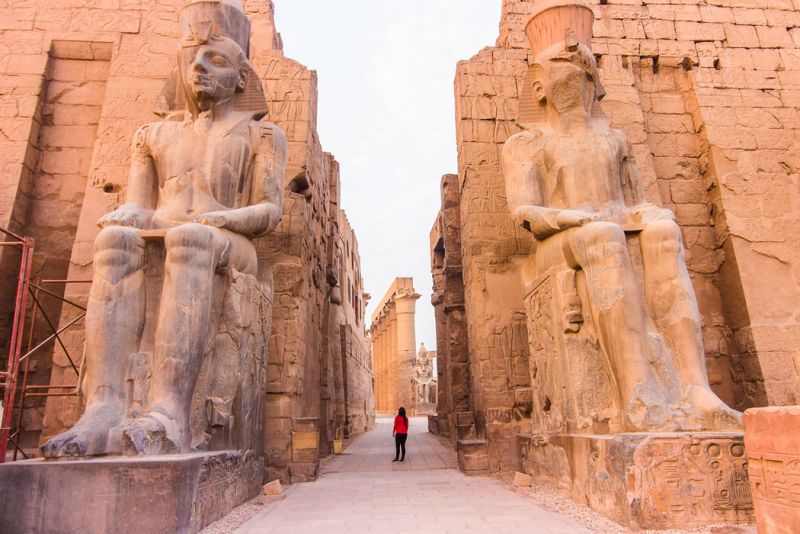
Architectural Features of Luxor Temple
Analysis of the unique design and structural elements
The Luxor Temple in Egypt is renowned for its unique design and impressive structural elements. The temple combines ancient Egyptian and Greek architectural styles, making it a fascinating example of cultural fusion.
One of the standout features of Luxor Temple is its massive entrance known as the First Pylon. This monumental gateway is adorned with intricate carvings depicting scenes from ancient Egyptian mythology and military conquests. The colossal statues of pharaohs and gods guarding the entrance add to the temple's grandeur.
Moving deeper into the temple, visitors will encounter the Hypostyle Hall, a vast space filled with towering columns. These columns, arranged in a grid-like pattern, create an awe-inspiring effect and showcase the mastery of ancient Egyptian architecture. The walls of the Hypostyle Hall are adorned with intricate reliefs depicting religious and historical scenes.
The Luxor Temple also features a beautiful obelisk, once part of a pair that stood at the entrance. These tall, slender structures were carved from a single block of stone and adorned with hieroglyphs. While one obelisk remains at the temple, its counterpart now stands in the Place de la Concorde in Paris.
Through its unique design and structural elements, the Luxor Temple continues to captivate visitors, providing a glimpse into ancient Egypt's remarkable craftsmanship and rich history.
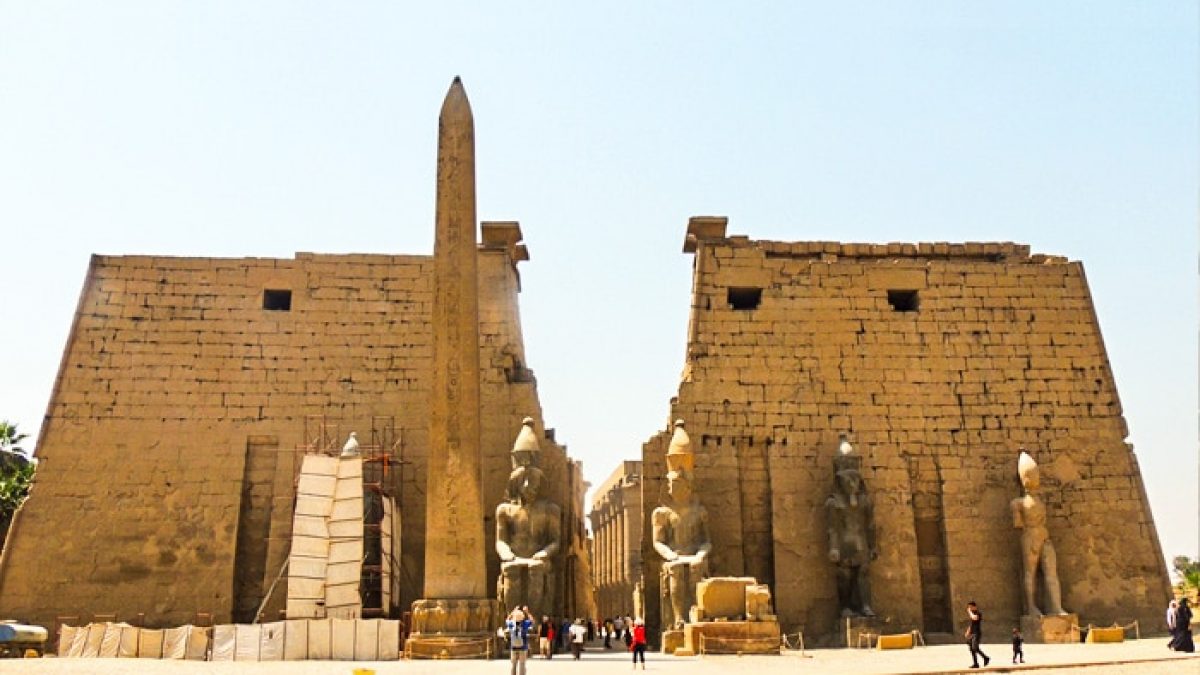
The Great Court of Luxor Temple
Exploring the grand entrance and its cultural significance
The Great Court of Luxor Temple is the grand entrance to this iconic ancient Egyptian structure. As you approach the temple, you'll be greeted by an imposing gateway flanked by massive statues of pharaohs and sphinxes, creating a sense of awe and majesty.
The significance of the Great Court goes beyond its impressive size and visual impact. This area was used in ancient times for various religious and ceremonial purposes. It was where important processions and rituals occurred, attracting pilgrims and devotees from all over Egypt.
The Great Court also served as a gathering place for administrative and social activities. It was a hub of political and cultural exchanges, where pharaohs and high-ranking officials convene and make important decisions. The architecture of the Great Court reflects the grandeur and power of the pharaohs, showcasing their divine status and authority.
Today, visitors can explore the Great Court and admire its stunning architectural features, including the colossal statues, hieroglyphic inscriptions, and intricately carved reliefs. The cultural significance of this entrance is palpable, offering a glimpse into the rich history and spirituality of ancient Egypt.
Here are a few key highlights of the Great Court of Luxor Temple:
- Impressive gateway flanked by colossal statues and sphinxes
- Used for religious rituals, processions, and administrative activities
- Showcases the power and divine status of the pharaohs
- Features intricate hieroglyphic inscriptions and reliefs depicting ancient Egyptian mythology and history

Luxor Temple Obelisk
Unveiling the story behind the impressive obelisk
The obelisk at Luxor Temple is a remarkable structure with a fascinating story behind its creation. Standing at a staggering height of 25 meters, the obelisk is made of red granite and was originally erected during the reign of Pharaoh Ramses II.
Like many other obelisks in ancient Egypt, the obelisk was meant to honour the sun god Ra. It was believed that the obelisk would connect the earthly realm and the divine, allowing the pharaoh to communicate with the gods.
Interestingly, the obelisk at Luxor Temple is not alone. It once had a twin obelisk, now in the Place de la Concorde in Paris, France. The transportation of the obelisk to Paris in the 19th century was a remarkable engineering feat, showcasing the ingenuity and determination of those involved.
The obelisk at Luxor Temple is intricately carved with hieroglyphics that tell stories of the pharaoh's military victories and divine lineage. These hieroglyphics provide a glimpse into ancient Egypt's rich history and culture.
Today, visitors to Luxor Temple can marvel at the impressive obelisk and imagine its grandeur and significance in the ancient world. Standing in the presence of such a monumental structure is a truly awe-inspiring experience that allows us to connect with the past and appreciate the remarkable achievements of our ancestors.
The obelisk at Luxor Temple is a stunning architectural masterpiece and a testament to ancient Egypt's ingenuity and spiritual beliefs. Its story and significance continue to captivate visitors worldwide, providing a window into the remarkable history of this iconic temple.
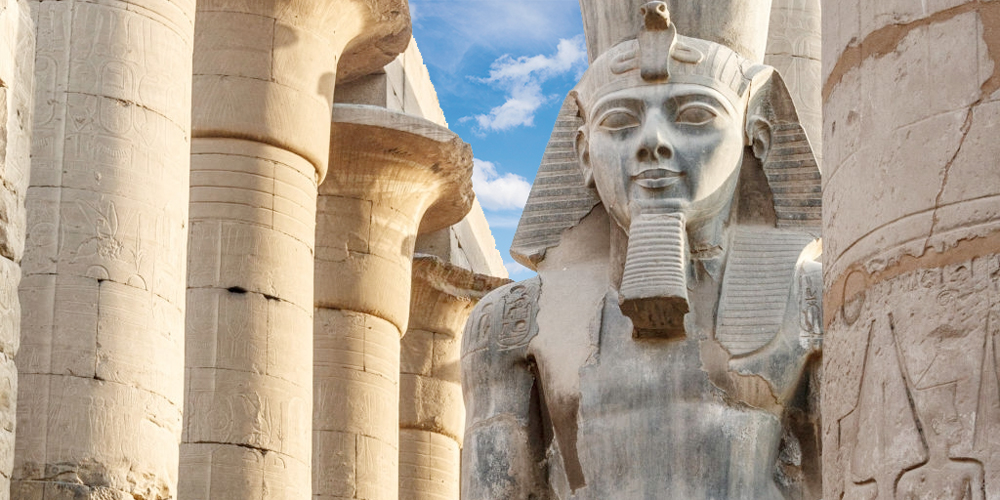
Luxor Temple Statues
Highlighting the statues and their symbolic representations
One of the striking features of Luxor Temple is its collection of majestic statues, each with its symbolic representation. These statues played a significant role in ancient Egypt's religious and cultural practices.
The most well-known statues at Luxor Temple are the seated colossal figures of Pharaoh Ramses II at the entrance. These statues represent the divine role of the pharaoh, with their imposing presence signifying his power and authority. The large statues emphasise the pharaoh's importance in the religious ceremonies conducted at Luxor Temple.
Another notable statue is the seated figure of the goddess Sekhmet, which represents the fierce and protective aspect of the goddess. Sekhmet was believed to be able to ward off evil and protect the temple from harm. Her presence in the temple reflects the importance of spirituality and divine protection in ancient Egyptian society.
Other statues in the temple complex include depictions of various deities, such as Horus, Osiris, and Hathor. Each statue portrays a specific god or goddess and carries its symbolism. These statues served as focal points for worship and were believed to embody the divine essence of the gods they represented.
Overall, the statues at Luxor Temple not only showcase the artistic mastery of ancient Egyptian craftsmen but also provide a glimpse into the religious and cultural beliefs of the time. They serve as reminders of the rich history and spiritual significance of this iconic temple.
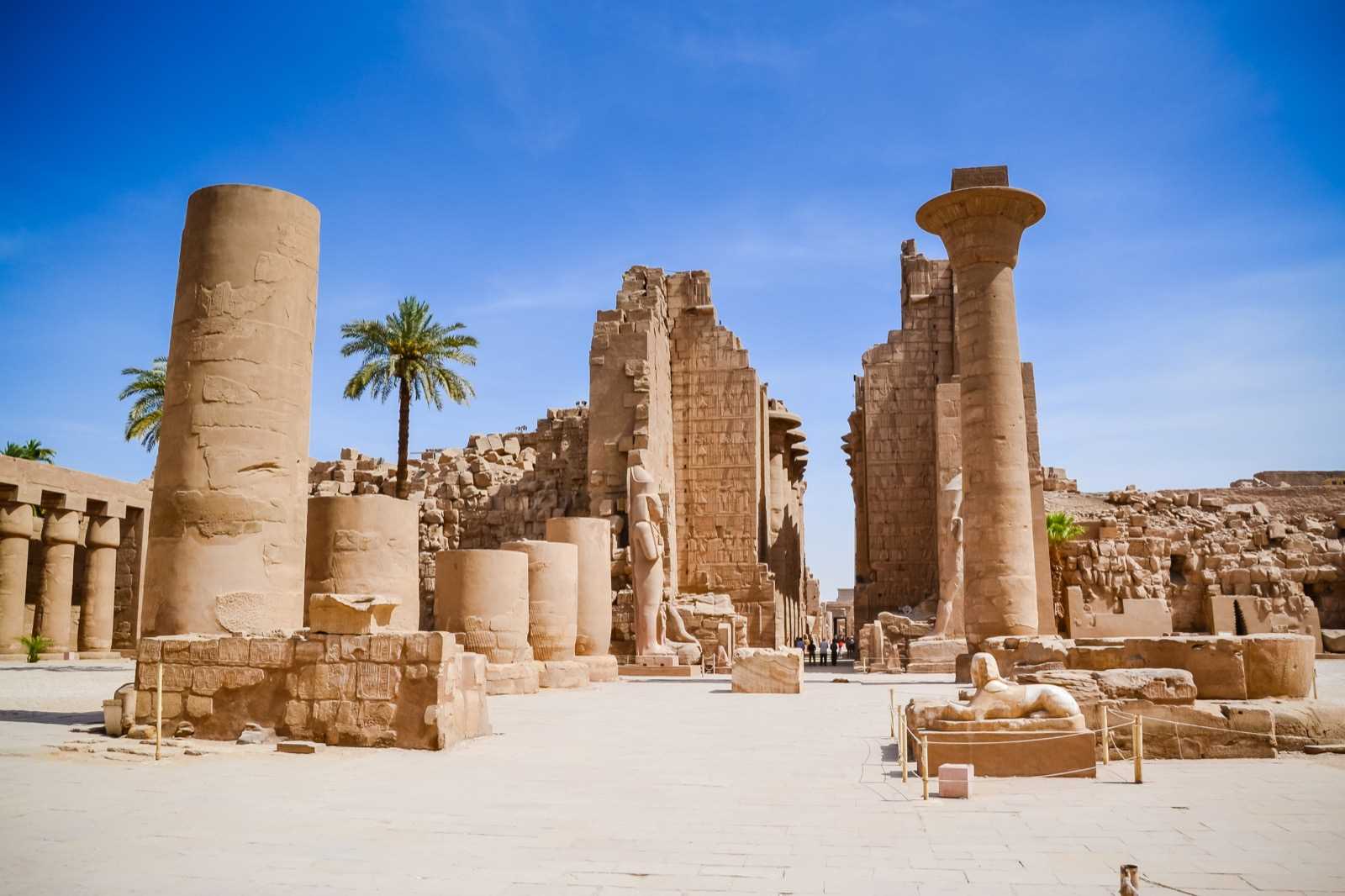
Luxor Temple Hypostyle Hall
Examining the stunning columns of the Hypostyle Hall
The Hypostyle Hall in Luxor Temple is a mesmerizing architectural masterpiece showcasing ancient Egypt's creativity and engineering skills. This hall is known for its stunning columns, a sight to behold.
The hall houses 74 columns, with the central ones being the tallest. These columns are massive, reaching up to 23 meters in height, and are adorned with intricate hieroglyphs and elaborate carvings. The columns are arranged in a grid-like pattern, creating a sense of grandeur and awe.
The Hypostyle Hall served important ceremonial and religious purposes in ancient times. It was used for various rituals and ceremonies, including celebrating religious festivals and worshipping Egyptian deities.
Each column in the Hypostyle Hall tells a unique story through its intricate carvings and hieroglyphs. These carvings depict scenes from ancient Egyptian mythology, as well as battles and victories of pharaohs.
The columns are not only decorative but also serve a structural purpose. They support the stone roof and help distribute the weight evenly, allowing for large and open space construction.
The scale and beauty of the Hypostyle Hall continue to captivate visitors today. Walking through the hall, surrounded by towering columns and ancient artworks, transports you back to the glory days of ancient Egypt. It is truly an awe-inspiring experience.
Here are some key features of the Hypostyle Hall in Luxor Temple:
- 74 massive columns, with the tallest reaching up to 23 meters in height
- Elaborate carvings and hieroglyphs depicting scenes from ancient Egyptian mythology
- Structural importance in distributing weight and supporting the stone roof
- Cultural and religious significance in ancient Egyptian rituals and ceremonies
Visiting the Hypostyle Hall is a must for anyone interested in ancient Egyptian history and architecture. It is a testament to the incredible craftsmanship of the past and a reminder of the rich cultural heritage of Egypt.
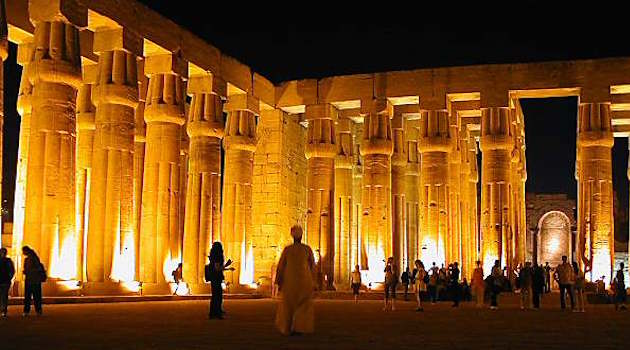
Luxor Temple Festival
Insight into the religious ceremonies and celebrations held at Luxor Temple
The Luxor Temple was not only a religious centre in ancient Egypt but also a venue for numerous ceremonies and celebrations. These events played a significant role in the religious and cultural life of the ancient Egyptians.
The temple was primarily dedicated to the rejuvenation of pharaohs, symbolizing their divine transformation and rebirth. The Opet Festival, one of the most important religious ceremonies held at Luxor Temple, was an annual event that lasted for several weeks. During this festival, Amun, Mut, and their son Khonsu statues were bathed, purified, and placed in barques (boats) for a procession. The procession would then reach the Karnak Temple, approximately 2.5 kilometres away.
The festival was a grand spectacle involving priests, musicians, dancers, and the general public. It was an opportunity for the pharaoh to connect with the divine and seek the blessings of the gods for the coming year. The festival also served as a way to demonstrate the pharaoh's power and ensure the continued prosperity of Egypt.
Other ceremonies and celebrations held at Luxor Temple included the Beautiful Feast of the Valley, which commemorated the dead and included offerings and rituals to honour the deceased, and the Heb-Sed Festival. This jubilee celebration marked the pharaoh's thirty-year reign and reaffirmed his legitimacy and vitality as a ruler.
These religious ceremonies and celebrations brought together the ancient Egyptian community, fostering unity and shared purpose. They were a testament to the important role that Luxor Temple played in the religious and cultural life of ancient Egypt.

Preservation and Restoration Efforts
Discussions on the conservation and restoration initiatives
Conservation and restoration efforts play a crucial role in preserving the historical significance of Luxor Temple. Over the years, various initiatives have been undertaken to protect and restore this iconic landmark.
One of the key conservation efforts has been focused on safeguarding the temple from natural elements such as erosion, weathering, and pollution. This involves regular cleaning, repairing damaged structures, and applying protective coatings to prevent further deterioration.
Additionally, extensive research and documentation are conducted better to understand the temple's original design and construction techniques. This information helps guide the restoration process, ensuring the temple is restored as closely as possible to its original state.
International organizations, such as UNESCO, have played a vital role in supporting and funding these conservation efforts. Collaborative projects bring together experts from different fields, including archaeologists, architects, and conservation specialists, to ensure the highest restoration standards.
To make Luxor Temple accessible to visitors while preserving its fragile structures, measures such as controlled visitor access, walkways, and protective barriers have been implemented. These efforts strike a balance between allowing visitors to appreciate the temple's beauty and heritage while minimizing the risk of damage.
The conservation and restoration initiatives at Luxor Temple serve as a testament to the dedication to preserving the rich cultural heritage of Egypt. Through these efforts, future generations can continue to marvel at the magnificence of this ancient temple and gain a deeper appreciation for its historical significance.

Luxor Temple at Night
Experiencing the mesmerizing beauty of Luxor Temple after sunset
Experiencing the mesmerizing beauty of Luxor Temple after sunset is a must for any visitor to Egypt. The temple takes on a new enchantment level, illuminated against the night sky. Here's what you can expect when visiting Luxor Temple at night:
-
Stunning Lighting: The temple is bathed in a soft, golden glow, highlighting its intricate carvings and architectural features. The lighting creates a magical ambience that enhances the temple's grandeur.
-
Peaceful Atmosphere: The crowds are usually smaller in the evening, allowing you to enjoy a more serene and contemplative experience. The peacefulness adds to the awe and reverence as you stroll through the temple grounds.
-
Sound and Light Show: Luxor Temple hosts a captivating sound and light show that brings the temple's history to life through narrative and synchronized lights. The show takes you on a journey back in time, showcasing the temple's significance throughout ancient Egyptian history.
-
Musical Performances: Luxor Temple hosts live performances on certain occasions that add a magical touch to the already captivating atmosphere. Listening to traditional Egyptian music surrounded by the temple's ancient walls is an unforgettable experience.
-
Reflective Pools: The temple's reflective pools beautifully mirror the illuminated structures, creating a stunning visual effect that adds to the ethereal beauty of the scene.
Experiencing Luxor Temple at night offers a unique opportunity to appreciate the temple's architectural marvels and immerse yourself in ancient Egypt's rich history and culture. It is a truly mesmerizing and unforgettable experience.
